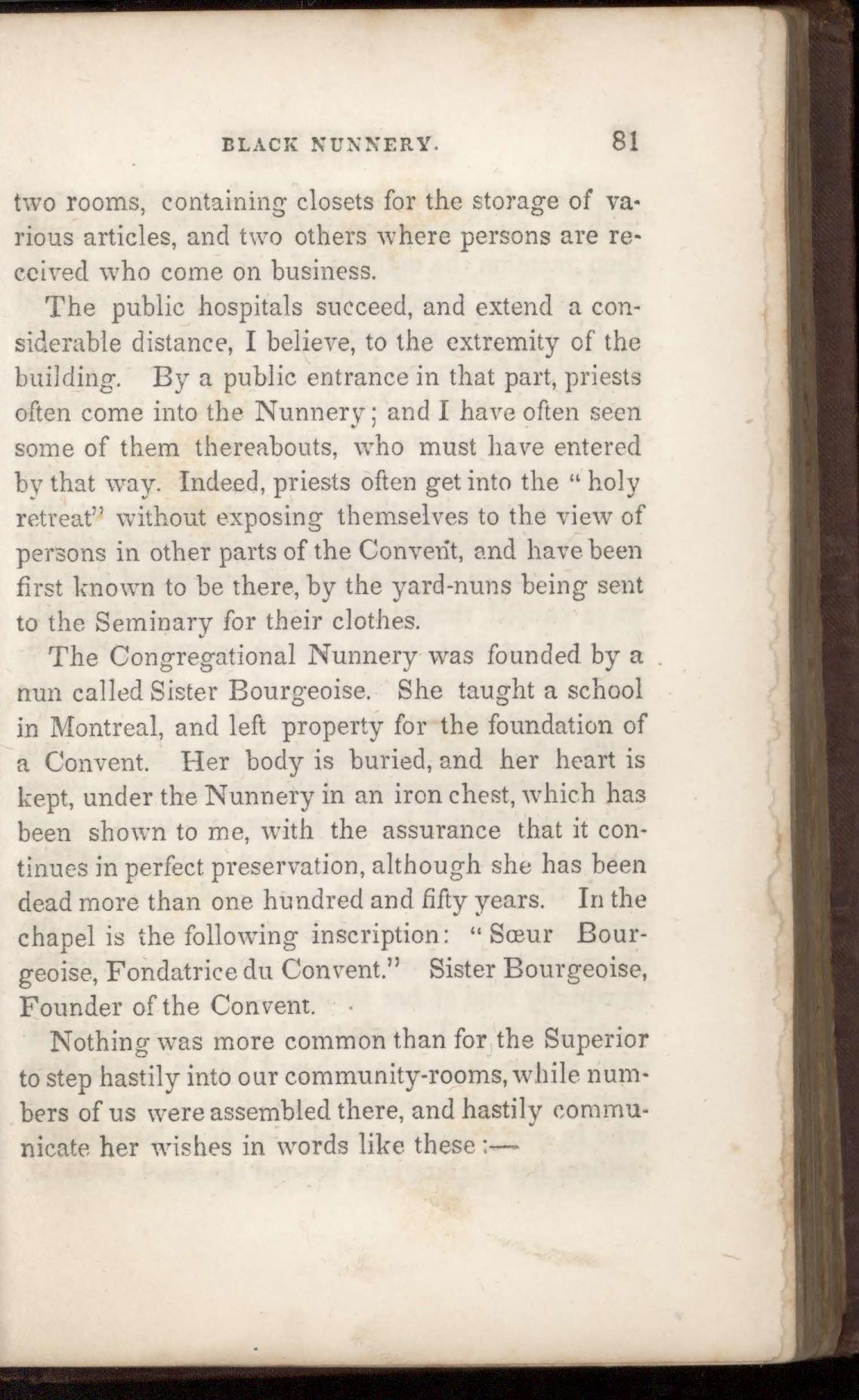

two rooms, containing closets for the storage of various articles, and two others where persons are received who come on business.
The public hospitals succeed, and extend a considerable distance, I believe, to the extremity of the building. By a public entrance in that part, priests often come into the Nunnery; and I have often seen some of them thereabouts, who must have entered by that way. Indeed, priests often get into the "holy retreat" without exposing themselves to the view of persons in other parts of the Convent, and have been first known to be there, by the yard-nuns being sent to the Seminary for their clothes.
The Congregational Nunnery was founded by a nun called Sister Bourgeoise. She taught a school in Montreal, and left property for the foundation of a Convent. Her body is buried, and her heart is kept, under the Nunnery in an iron chest, which has been shown to me, with the assurance that it continues in perfect preservation, although she has been dead more than one hundred and fifty years. In the chapel is the following inscription: "Sœur Bourgeoise, Fondatrice du Convent." Sister Bourgeoise, Founder of the Convent.
Nothing was more common than for the Superior to step hastily into our community-rooms, while numbers of us were assembled there, and hastily communicate her wishes in words like these;—
